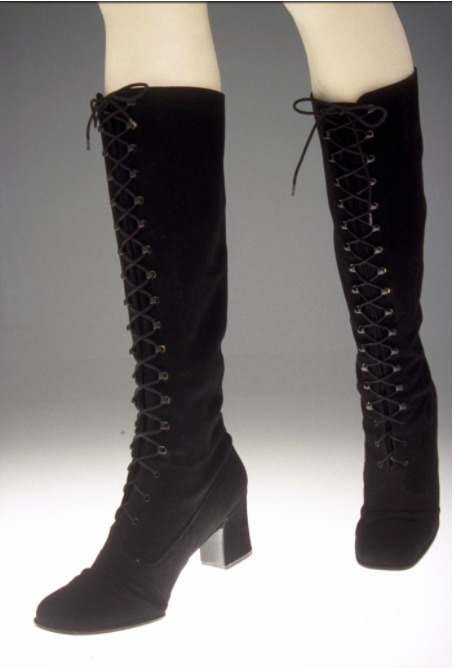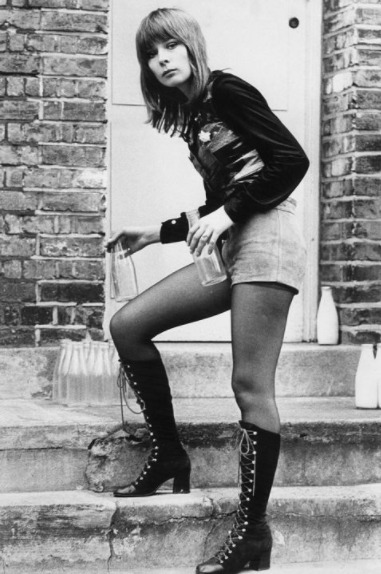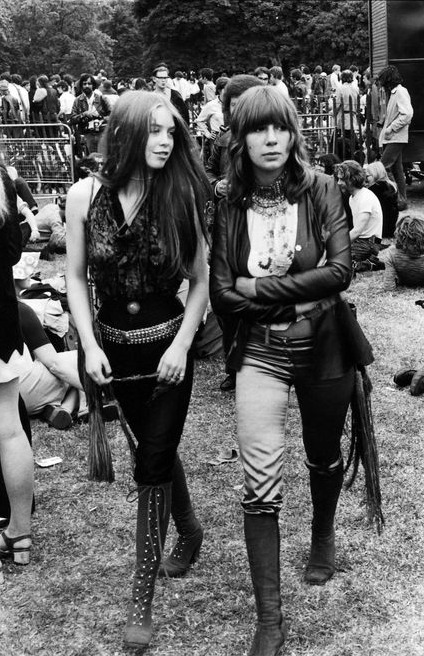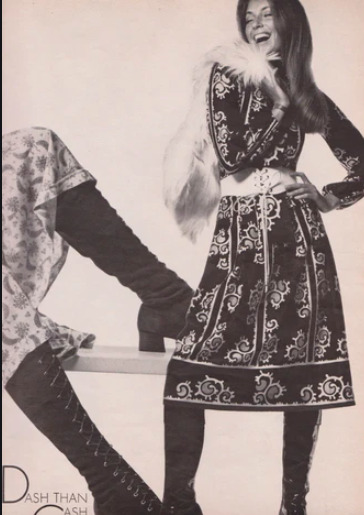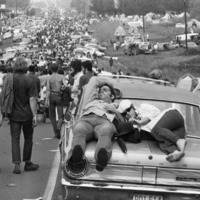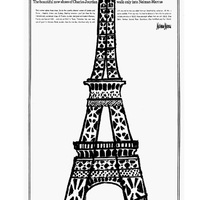Not Your Granny's Boots: The Effects of Street Fashion on Designer Brands
These pristine pair of black suede boots were donated to the Texas Fashion Collection on October 17th, 1985 by Natalie “Schatzie” Lee. The boots are over the calf length with a squared off Cuban heel at 2 1/2” tall. The lace up detail on the front consists of three rows of eyelets at the bottom end and fifteen hooks lining the front upper portion. ”Made in France” is impressed on the rubber and leather sole. The inside of the boots are stamped with the brand name “Charles Jourdan/Paris”. The size are 8 ½. Thier physical description is as follows: 25 cm. long; 9 cm. at widest; 45 cm. at highest; Heel: 6.4 cm. (2 1/2") high along axis with cap.
The political opposition of the youth in the late 1960s created a counter-culture that departed from the norm of a traditional lifestyle. One of the most recognized departures from the type was the influential personality of hippie embodiment. Music, art, previous sub cultures, and notably music festivals and concerts, like Woodstock in 1969, contributed to the fashion app roach of the late 1960’s hippie movement. The identity of hippie became a radical combination of flowers, feathers, psychedelic prints, beads, fringe, and bell-bottoms. The hippie street fashion, especially debuting out of the Haight-Ashbury district of San Francisco, mesmerized thousands of youth throughout the country. This instantly caught the attention of top fashion designers and they took note.
Everything from hair to the sometime absence of shoes was orchestrated to obliviate any materialistic conscious effort. Although shoes were not always worn they were not overlooked. In this anti-establishment mission the hippie culture relied on second-hand and flea market buys to decorate themselves. Anti-commercialism produced feet that were now adorned in hand-me-down sandals, moccasins, and granny boots. The granny boot, a retro design originally composed in the 1920’s, was reintroduced as youthful hippie feet relied on the thrifty and comforts of worn in used apparel. The original granny boots were typically made of leather, had a mid-calf length, with a somewhat short heel and securing lace up in the front. These boots became an essential part of the hippie lifestyle and garnished their place back in history. While these boots were commemorative of retro styles high end designers took note and rapidly turned out high fashion reproductions. As Natalie Lee said, who donated a late 1960s high end Charles Jourdan pair of granny boots to the Texas Fashion Collection at UNT, the boots would be “worn with the mid-calf “midi” skirt or dress” which was an essential part of the hippie uniform.
Bubble Up... Street Style to VOGUE..
Women saw an explosion of fashion after 1960. While the flat-heeled, white kid leather boots launched by Parisian couturier André Courrèges was the ubiquitous boot of the decade, many styles of boot were popular. Go-Go boots could be ankle, knee, or thigh high and with or without heels, they all served as the perfect accompaniment to the miniskirt. By the end of the decade, retro styles became popular, and the front lacing granny boot became an essential part of the hippie style.--Clare Sauro, "Boots." The Berg Companion of Fashion
The transformation of collective taste results from the diversity of experience that occurs in social interaction. For Blumer, fashion is directed by consumer taste, and it is a fashion designer’s task to predict and read the modern taste of the collective mass. His bubble-up or trickle-up, theory situates consumers in the construction of fashion. By investigating Japanese youth subcultures in different districts, it is evident that the fashions did not come from wealthier social classes, celebrities, or popular retailers. The fashions were born on the streets.--Yuniya Kawamura, "The Power of the Youth: Trickle-Up/Bubble-Up Theory Revisited."
